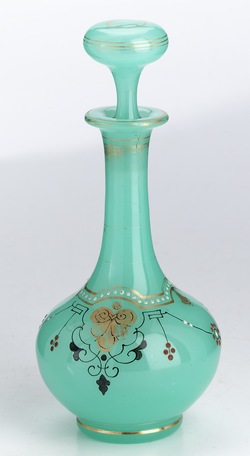
A History of French Perfumes
Under the reign of Louis XVI (1774 to 1791) and of Marie Antoinette, hairstyles reach their highest level, sometimes five to seven times the length of the face! Powdering with excess (with the powder containing dried wheat starch, pulverized, scented and tinted) constituted the hygiene of the people at Court. Women were not the only ones to use it without limitation: men powdered themselves abundantly and wore powdered wigs tied with ribbons. Scents of violet and rose replaced heavy and strong perfumes.
The House "A la Corbeille Fleurie", ancestor of "Houbigant" was founded in 1775.
With the fall of the Former Regime, this frenzy of the odors declined to favor the sweetness of life and this love for perfumes which led to the development of the profession of perfume making.
Robespierre, inspired by Jean-Jacques Rousseau, had his portrait painted a rose in the hand, and outlawed perfumes that according to him were not natural.
The Revolution (1789) was felt in the perfume industry, however production continued nevertheless, but the names of perfumes were hardly engaging for example the “Elixirs à la Guillotine”...
This terrible period for perfumers was thankfully quite short: Muscadins, adversaries of the Jacobins are named because of their predilection for the use of musk scented perfumes.
A little later under the Directory (1795-1799), women called "Merveilleuses" (Marvelous women) resurrected Greek costume featuring light fabrics, transparent veils and revived the madness of perfumery while returning to the classical antiquity of scented baths.
Madame de Tallien it is said dove naked into strawberry and raspberry baths and then was gently rubbed with sponges soaked with milk and perfumes.
In opposition to the previous customs, the taste for scents eventually changed for mild perfumes with floral and fruity notes.
In 1798: Pierre François Lubin composed the "Eau de Lubin" and opened the first perfumery shop at 55, rue Saint-Anne in Paris: "Aux Armes de France".
 RSS Feed
RSS Feed